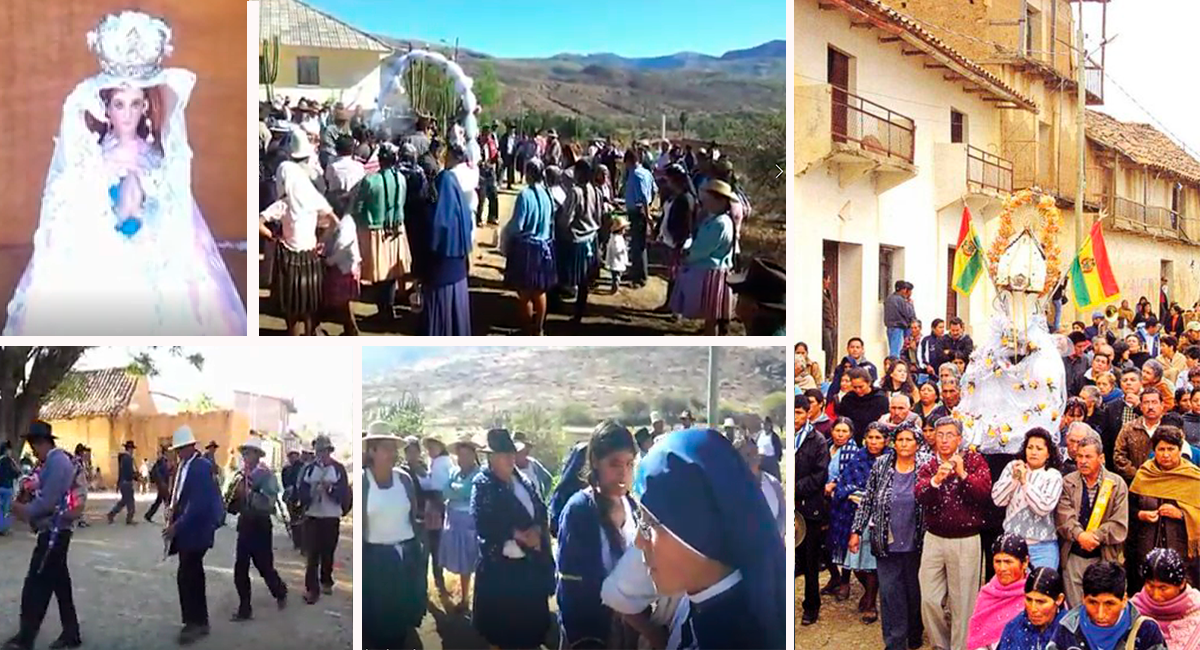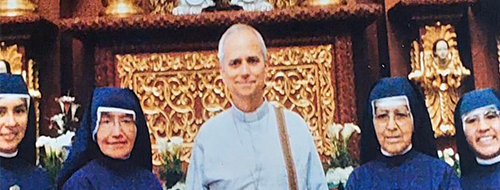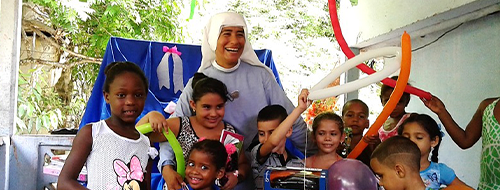When you leave the country, you are impressed by many things. I am from Piura, Peru, and I have had the opportunity to work in the sister nation of Bolivia. The Patmos where I have been on mission is called Tin Tin. I am going to tell you about the Bolivian festivity of the Virgin of Sikimira.
Sikimira is a Quechua word meaning little ant. In the month of August, the feast of the Virgin of Sikimira is celebrated in Tin Tin, a village belonging to the Prelature of Mizque, Cochabamba (Bolivia). The image is tiny, measuring 12 to 15 cm.

A neighbouring people called Molinero come on pilgrimage to Tin Tin on 29 August to celebrate Vespers. They come playing instruments and dressed in their typical costumes, these people are called lechiguayos. They blow up cuetes, announcing their arrival. They go to the church whose patron saint is St. James the Apostle. There the Mothers celebrate Vespers and the solemn blessing.
The following morning, August 30th, after the celebration of the Word, the Virgin of Sikimira goes in procession to El Molinero (a neighbouring village), where she will remain for three weeks. The platform of the Virgin is carried on the shoulders. The path is decorated with arches of flowers and at each arch the Virgin is sahumed by the people who made the arch. At the altars there are prayers and songs, and of course the blessing. Once all the arches are finished, the Virgin of Sikimira is given to the people of Molinero. And there is a lot of noise, there are cuetes, palms, and dancing.
When three weeks have passed, the neighbouring villages come at night, with their lechiguayos, and the first to arrive is always Tin Tin. They are followed by Laguna, Santiago, Raqaipampa and other small villages. Then we have the Celebration of the Word and the blessing.
In the morning of the next day, the Virgin bids farewell to Molinero. For this they also prepare flower arches, and in each arch there is corn chicha. Some offer food. And they have a custom they call “chachan”. It consists of pouring a little chicha next to the Virgin as a way of thanking her. Arriving at the exit of Molinero, the authorities give the Virgin to the people of Tin Tin. They do so with a speech in Quechua. Then the lechiguayos carry the Virgin by car.
On the way to Tin Tin, the neighbouring villages await the Virgin with more altars, where we pray and sing, in other words, the Virgin is venerated. Nearby, the Virgin is carried on the shoulders to the church. And once again the people carry the Virgin of Sikimira with them.
Patmos Tin Tin, Cochabamba, Bolivia
Mother Luzmila MJVV.


